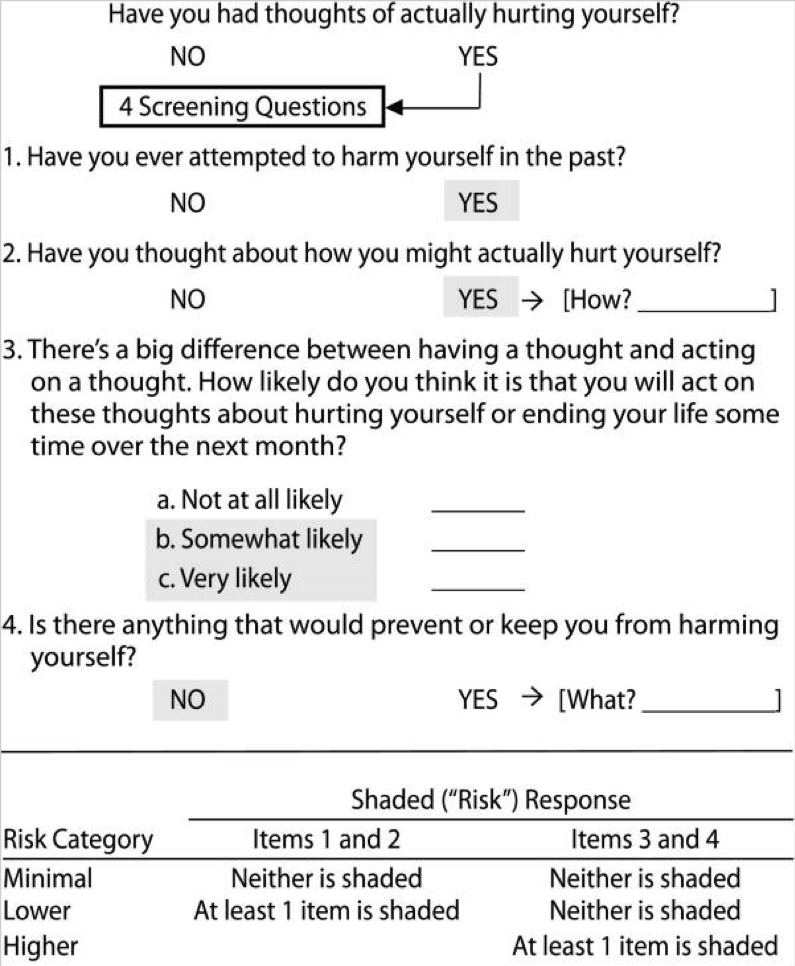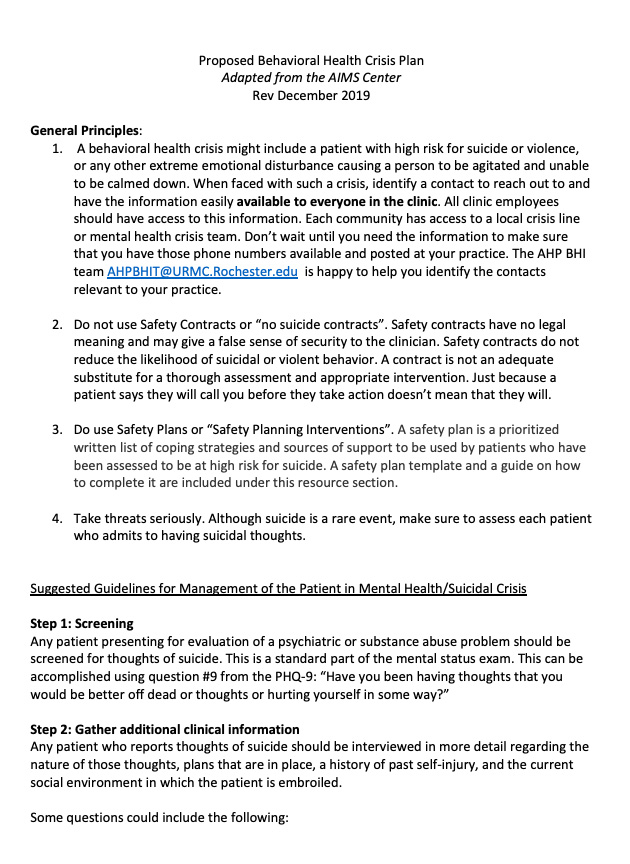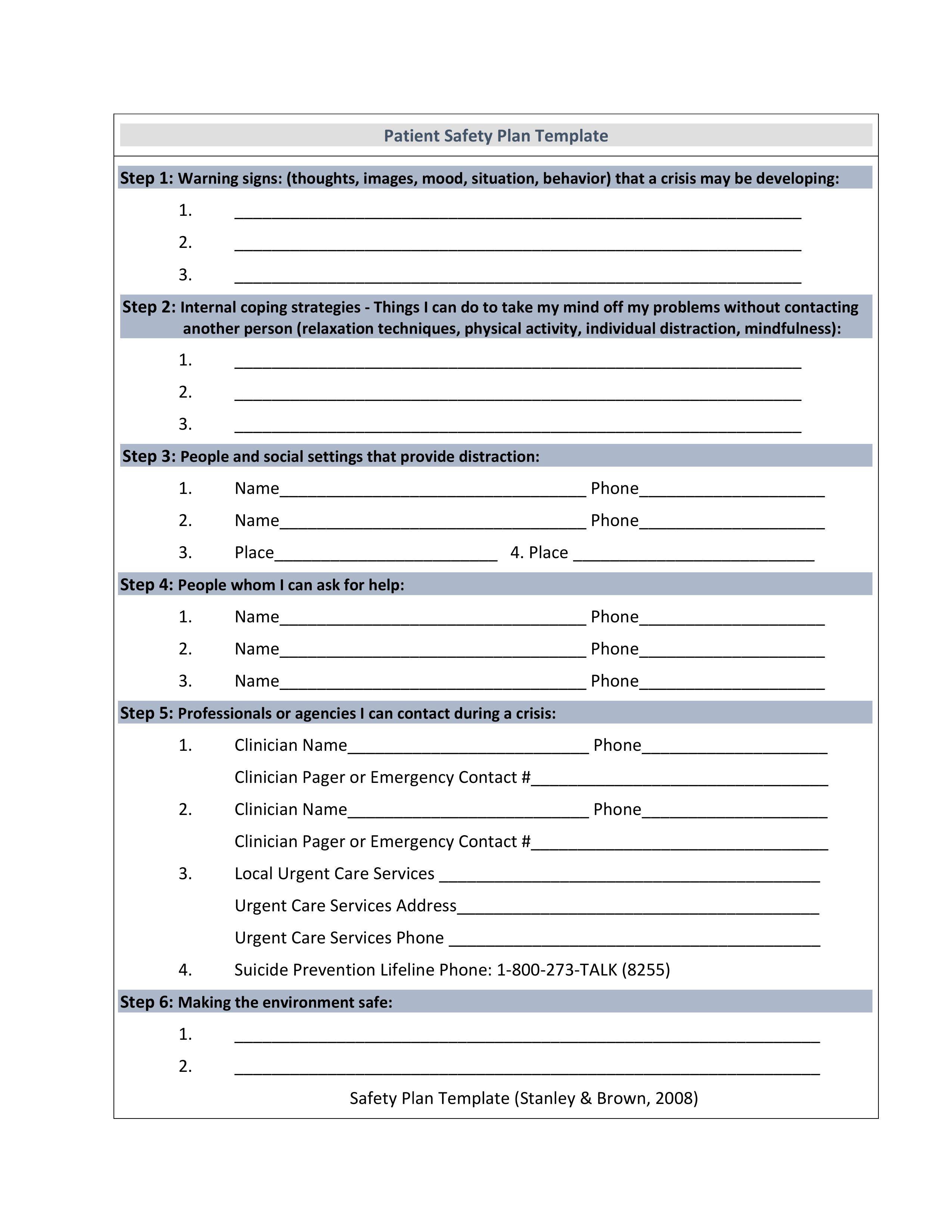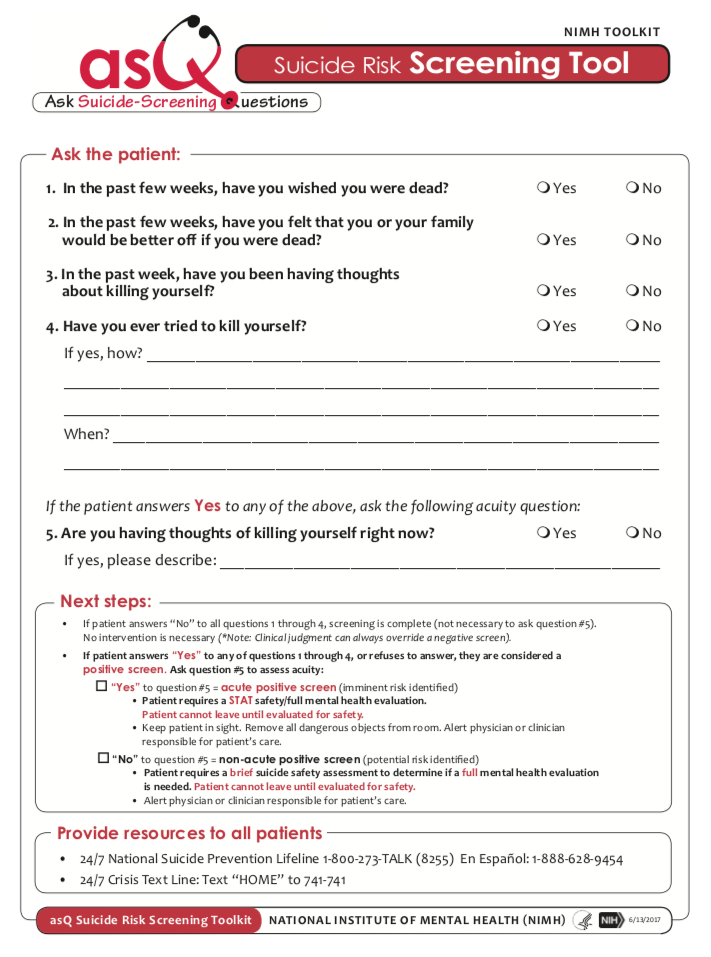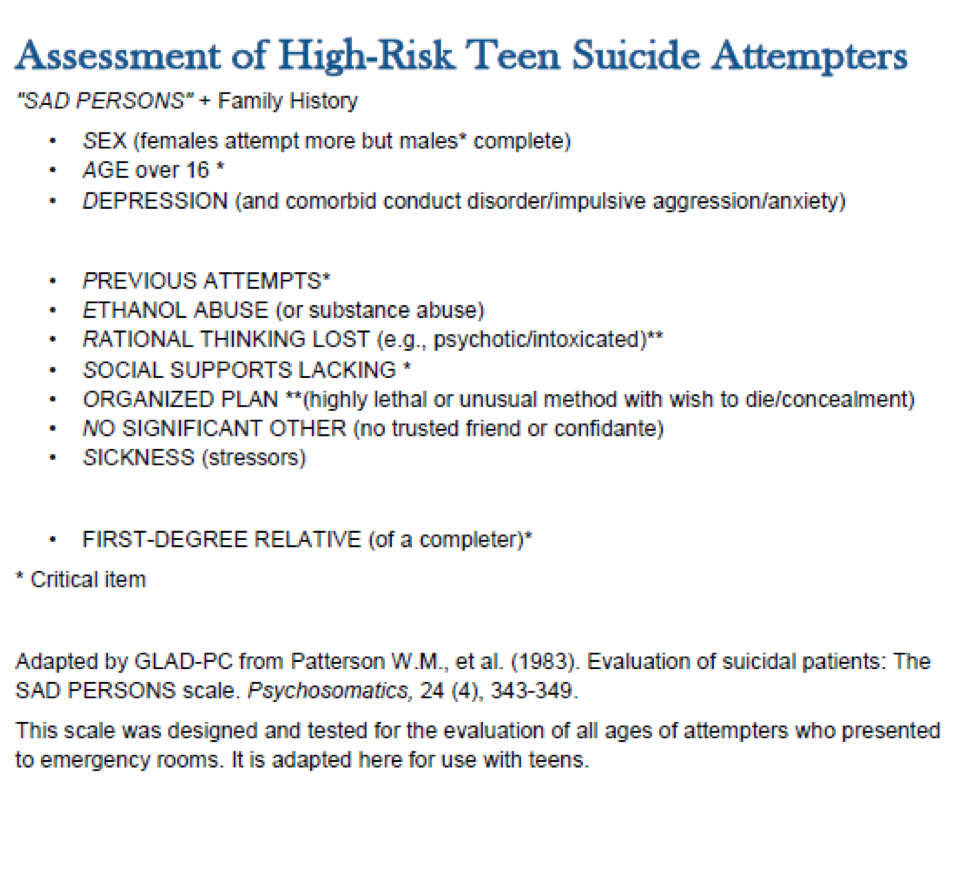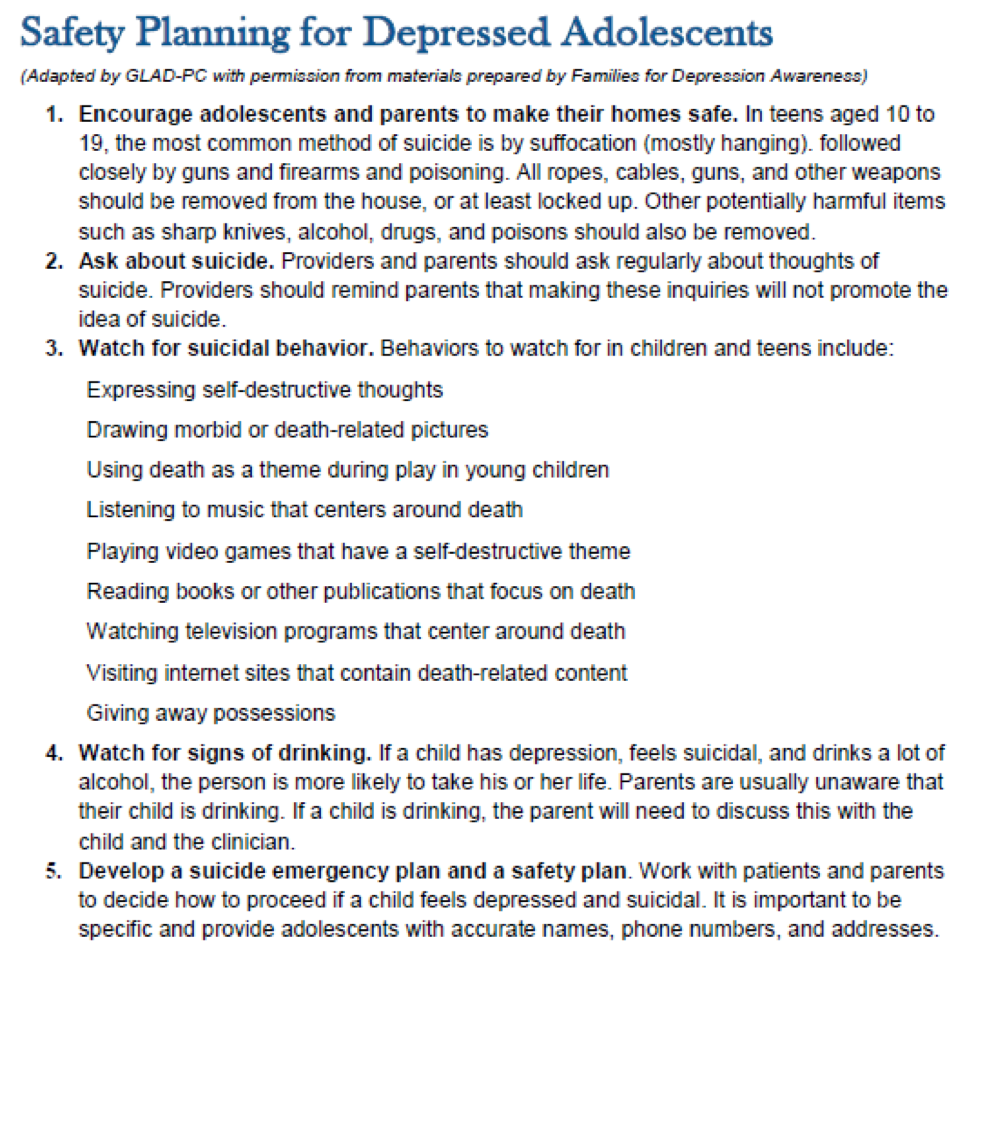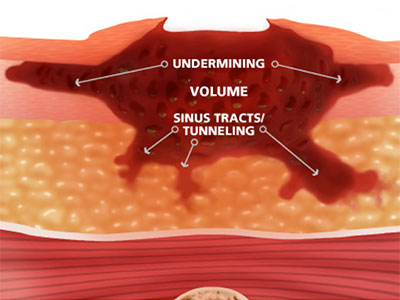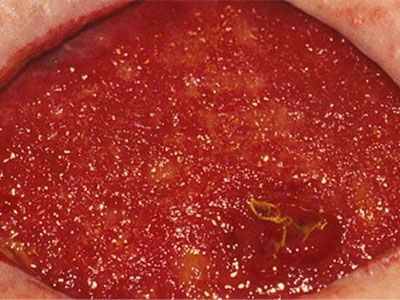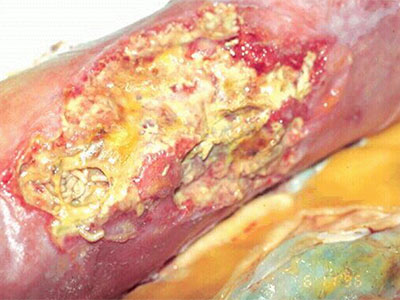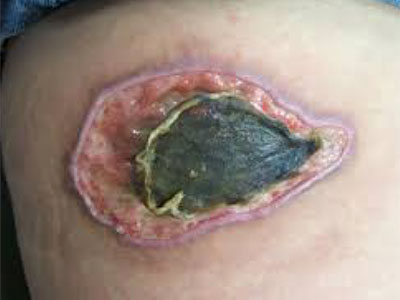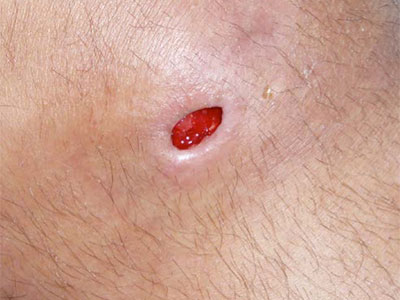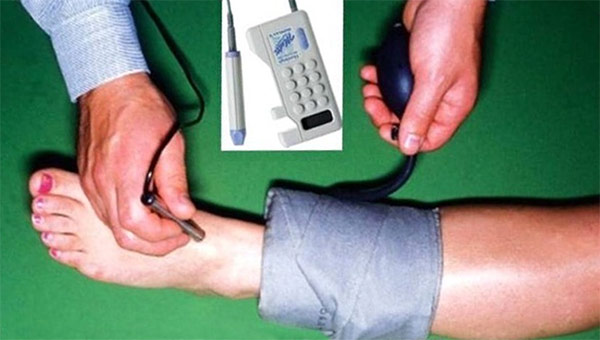Crisis Intervention Resources
Suicide Risk Assessment Tools for Adults
Primary care is the setting where most people receive their health care including behavioral health and therefore PCPs have an important role to play in suicide prevention. People who die by suicide are more likely to have seen a PCP in the previous month before their death than a psychiatric provider.1
The National Suicide Prevention Lifeline provides 24/7, free confidential support for people in distress. They also provide best practices for professionals. Direct your patients and families to call 1-800-273-8255.
About 15 to 20% of people with Major Depression die of suicide. In fact, suicide in the 10th leading cause of death in the US and the 2nd for people ages 15 – 34.2
The Suicide Prevention Resource Center (SPRC) has developed a suicide prevention toolkit for primary care practices which is available for free at http://www.sprc.org/settings/primary-care/toolkit.
The SPRC toolkit also includes a large selection of resources and a suicide primer which can be downloaded and distributed for free.
The care manager in your practice or BH staff if available can assist with any situation where a patient is assessed to be at increased risk for self-harm. The AHP BHI team can be reached by email at [email protected]
- Ahmedani, B. K., Simon, G. E., Stewart, C., Beck, A., Waitzfelder, B. E., Rossom, R.,...Solberg, L. I. (2014). Health care contacts in the year before suicide death. Journal of General Internal Medicine, 29(6), 870–877.
- Ten leading causes of death by age group, United States, 2015. Web-Based Inquiry Statistics Query and Reporting System
(WISQARS). National Center for Injury Prevention and Control, Centers for Disease Control and Prevention. Retrieved from www.cdc.gov/injury/wisqars/LeadingCauses.html.
Suicide Risk Assessment Tools for Adolescents
Primary care is the setting where most people receive their health care including behavioral health and therefore PCPs have an important role to play in suicide prevention. People who die by suicide are more likely to have seen a PCP in the previous month before their death than a psychiatric provider.1
The National Suicide Prevention Lifeline provides 24/7, free confidential support for people in distress. They also provide best practices for professionals. Direct your patients and families to call 1-800-273-8255.
About 15 to 20% of people with Major Depression die of suicide. In fact, suicide in the 10th leading cause of death in the US and the 2nd for people ages 15 – 34.2
The Suicide Prevention Resource Center (SPRC) has developed a suicide prevention toolkit for primary care practices which is available for free at http://www.sprc.org/settings/primary-care/toolkit.
The SPRC toolkit also includes a large selection of resources and a suicide primer which can be downloaded and distributed for free.
The care manager in your practice or BH staff if available can assist with any situation where a patient is assessed to be at increased risk for self-harm. The AHP BHI team can be reached by email at [email protected]
- Ahmedani, B. K., Simon, G. E., Stewart, C., Beck, A., Waitzfelder, B. E., Rossom, R., . . . Solberg, L. I. (2014). Health care contacts in the year before suicide death. Journal of General Internal Medicine, 29(6), 870–877.
- Ten leading causes of death by age group, United States, 2015. Web-Based Inquiry Statistics Query and Reporting System
(WISQARS). National Center for Injury Prevention and Control, Centers for Disease Control and Prevention.
Retrieved from www.cdc.gov/injury/wisqars/LeadingCauses.html.
